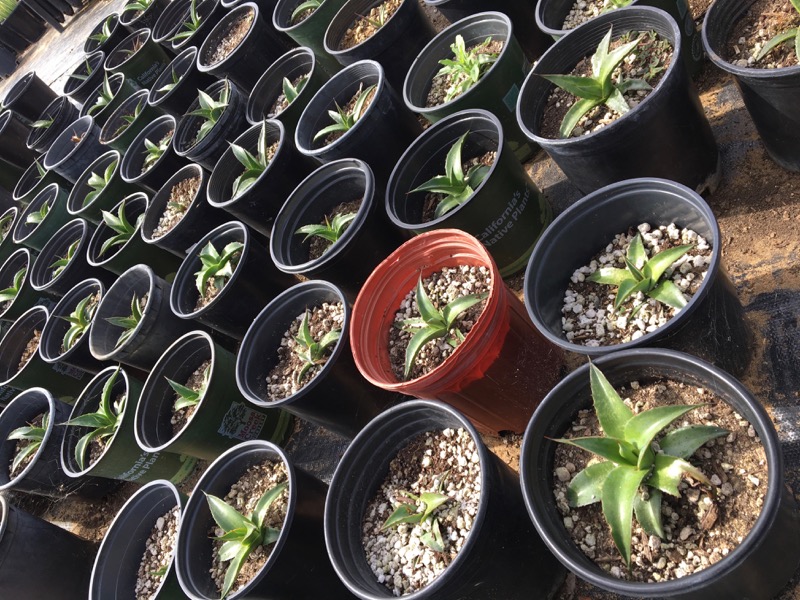
Due to the extreme regulation of fire on the Point Loma Peninsula, species like Wart-Stem Ceanothus (Ceanothus verrucosus) can’t depend on scarification from heat to induce germination. Ranger Adam Taylor, with the help of greenhouse manager Lorraine Kelley, have created protocols that mimic fire and allow Ceanothus to germinate within the greenhouse. Seeds from the Ceanothus are treated with boiling water, which allows the hard exterior of the shell to crack. By cracking the seed coat, moisture can then penetrate and induce germination. This work will hopefully prevent these species from being extirpated from the park.
Another plant that is being cultivated within the greenhouse is the Shaw’s Agave (Agave shawii). This species of agave has adapted to live in this area, the northern most part of its range, however Park Rangers noticed a lack of seedling recruitment from these plants. The agave have been cloning rosettes, but new plants from seed have not been found. One possible answer to the lack of sprouting seeds in the Park is a missing pollinator. The Mexican Long-Tongue Bat (Choeronycteris mexicana) is the main pollinator on the Baja Peninsula. Of the 11 species found within the Park, the Mexican Long-Tongue Bat has not been documented. Another explanation for the lack of recruitment is herbivory. With coyotes and bobcats missing from the park, and foxes being a rare occurrence, small herbivorous animals are consuming seedlings at high rates. Agave seedlings seem to be a favorite of these herbivores. Greenhouse staff have successfully sprouted this agave and have nurtured 200 one gallon plants that are ready for restoration within the Park.

The greenhouse has become an integral part of the Parks restoration work. With over 30 species being germinated, including dominant species such as Rhus integrifolia, Salvia melifera, Isocoma menzezii, Artemisia californicum. Our current planting season saw 600 species being planted back into the Park along with the extensive removal of invasive species through our weed warriors program.
With the enormous Spring bloom this season, seed collection will begin as each of these species phenological cycles dictate. This season’s seeds will be stored and then put through their own protocols to be germinated and then used in the ongoing plant restorations of Cabrillo National Monument.
